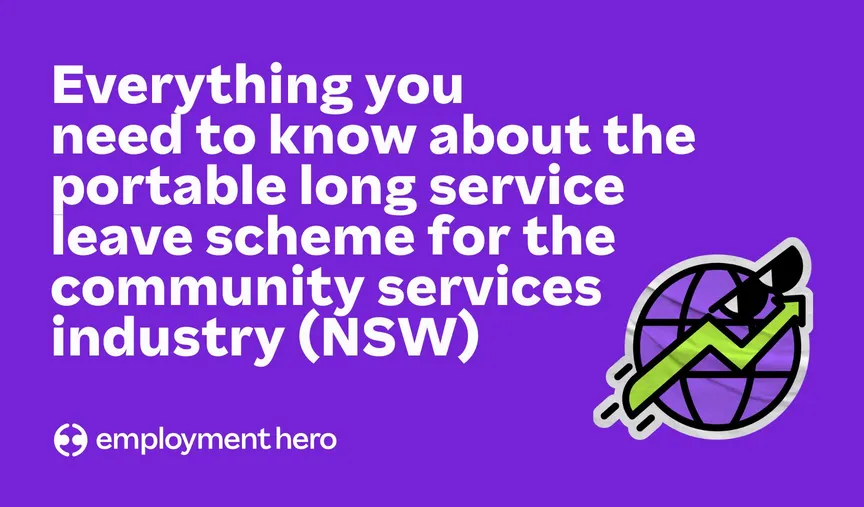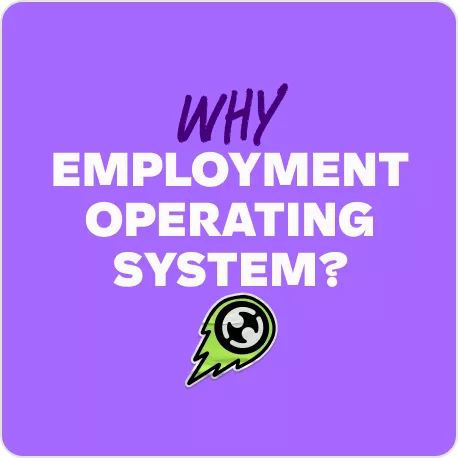Why micromanagement limits your business growth
Micromanagement has been proven to be harmful for your business – and for your team’s mental health. Here’s the low down and how to stop it.

In today’s modern workplace, effective leadership and management are crucial for driving growth and success.
But effective management is not just about making sure your team is meeting those big goals in the name of the business. It also plays an essential role in keeping your team engaged and happy.
And while there are numerous management styles to choose from, it’s come to our attention that sometimes managers unintentionally micromanage, or worse still, are so used to this approach that it’s simply hard for them to flip the switch.
But we’ve got bad news for you if you’re a micromanager. Not only does that create a hostile work environment, it also has an impact on your team’s job satisfaction and mental health.
The good news is that it’s not too late to say goodbye to micromanaging, and hello to a healthier management style.
In this blog, we unpack why a micromanagement style is unhealthy for you and your team, how it can negatively affect their engagement in the workplace, and how you can tame your inner micromanagement style to foster a more trusting work environment.
If you’re leading a remote team, it’s crucial to learn from others’ mistakes to avoid micromanagement pitfalls. Check out this remote working guide.

What is micromanagement?
Gartner describes it as “a pattern of manager behaviour marked by excessive supervision and control of employees’ work and processes, as well as limited delegation of tasks or decisions to staff.”
So what’s so terrible about it?
Often viewed as a controversial management style, micromanagement often unites people by lowering employee morale and can, in some cases, stifle creativity and not to mention – lower levels of job satisfaction.
While some managers are aware of using this technique as their management style, others do it unintentionally. Deep breaths everyone. We can fix this.
Why do some managers adopt this management style?
Several factors contribute to managers adopting a micromanagement style. Most of these are often selfish reasons.
Some managers may adopt micromanagement due to a lack of trust in their employees’ abilities, fear of failure or worse still – fear of success.
They may believe that by closely overseeing every task, they can ensure that work is done correctly and avoid any potential mistakes.
Additionally, some managers may have perfectionist tendencies, or a need for control, leading them to micromanage as a way to maintain a sense of order and achieve their desired outcomes.
But as Ron Ashkenas discovered ten years ago – there are also two fundamental issues that create a need to micromanage.
Isolation and disconnection
Ron describes this as the feeling of isolation that happens when managers rise through the ranks. Often, he says micromanagement as a form of information seeking is “an attempt to stay connected and driven by anxiety”. How do you move away from this?
If this might be an unconscious reason why you’ve started micromanaging, that’s ok. Acknowledging this is part of the process of letting it go. To do that, we suggest shifting that focus into building trust in your team. Set your team up for success by providing them with the tools and knowledge they need to do their jobs well.
Letting go is difficult
If you’re used to doing something in a particular way, especially if it got you a promotion – Ron says you’re less likely to be able to let go of your old way of doing the job. Even if you move on up in the ranks.
Ron believes that the knowledge gap between the process of getting promoted – and what happens after can put managers at a disadvantage. Especially if you find it difficult to unlearn something you’ve gotten used to doing.
What works to achieve operational goals, doesn’t work at a higher level of management where you need to be less operational, and more strategic.
How do you move away from this?
If you used to be a more operations-focused manager, now is the time to shift that focus more on building trust and relationships with your team.

How does micromanagement affect employee engagement?
From creating a toxic work environment that leads to a high turnover, to reduced productivity, there are countless ways micromanagement can affect employee engagement and taint your ability to retain staff.
Supporting your team also involves recognising their personal challenges. Discover how managers and HR can support working parents to create a more inclusive work environment.
Low employee morale
Constant scrutiny and lack of trust can erode employee morale and job satisfaction.
Unsurprisingly, this will make your employees feel demotivated and undervalued, which can lead to decreased productivity, increased turnover, and a negative work environment.
How can you fix this?
Embrace a strong tech stack that can create a solid process for your team to manage themselves.
Project management tools such as Asana are a great way to track progress. You can easily create project specific dashboards that give you the visibility of what’s going on, without constant scrutiny. Your team will be able to update tasks and be accountable for deadlines.
Reduced autonomy and creativity
Micromanagement restricts employees’ decision-making authority and hampers their ability to think independently and innovate.
This not only stifles creativity, but also leads to a lack of creative problem-solving, critical thinking skills – and your teams becoming complacent instead of embracing growth.
How can you fix this?
Instead of having constant oversight over them, the key is to delegate tasks and create a supportive environment. Give them space to perform tasks you’ve delegated by creating an environment where your team can come to you if they are blocked by something.
Examples of micromanaging in the work environment
Let’s go through two typical scenarios of micromanagement, and how you might be able to fix it.
Scenario 1
A manager constantly reviews and revises employees’ work, making significant changes without providing constructive feedback or allowing any input from the employees.
Don’t micromanage. Instead, try this:
- Give your team the opportunity to learn by providing constructive feedback.
- Set your team up for success by creating a process where they can ask for feedback for their work when it is ready.
- Allow input from employees: especially if they are subject matter experts.
Scenario 2
A manager sets rigid and unnecessary deadlines for every task, demanding regular progress updates and insisting on being cc’d on every email or communication.
Don’t micromanage. Instead, try this:
- Give your team flexibility by setting fluid deadlines for tasks.
- Create clear categories in your project management dashboard by sharing if a task is a nice to have, urgent, or business as usual (BAU).
- Have weekly check in points with your team that are optional so that they can come to you if they have any questions or need help getting unstuck.

What are some effective delegation techniques for empowering employees?
By employing these techniques, managers can create an empowering work environment that fosters employee growth, engagement, and overall success.
The following were tried, tested and recommended by our UK Content Marketing Manager, Josef James.
1. Focus on interests and expertise
When delegating tasks, consider the individual interests and expertise of your employees.
By focusing on your team’s interests and expertise, you can effectively let your team lead, manage and get on with their business as usual tasks.
2. Be transparent in how each task works towards a shared goal
To empower employees, it is essential to provide clarity on how each delegated task contributes to the overall shared goal.
When employees understand the bigger picture, they can connect their efforts to the larger objectives, fostering a sense of ownership and commitment to achieving shared goals. This is also a great way to motivate your team.
3. Don’t delegate everything
Avoid delegating every single task and reserve some responsibilities for yourself.
This ensures that you remain involved. It also prevents employees from feeling overwhelmed and fosters a collaborative work environment.
4. Equal delegation doesn’t always equal equality
Empowering employees through delegation does not mean dividing tasks equally among team members. Equality does not equate to equal distribution, but rather to providing equal opportunities for growth, recognition, and development.
Treat each employee as an individual, understanding their strengths and areas for improvement, and delegate accordingly.
After all, each team member possesses unique skills, experiences, and workload capacity. Acknowledge these differences and delegate tasks based on individual capabilities and strengths.
To enhance team productivity, it’s essential to focus on digital literacy. Here are some tips on how to improve digital literacy skills in the workplace to ensure your team can keep up with modern tools and practices.
How can you build trust in your team to enable macro-management?
1. Promote autonomy and management over workloads
To build trust within your team, it is crucial to promote autonomy and ownership.
Empower them to set goals, establish priorities, and make choices that align with the team’s objectives.
By demonstrating trust in their abilities and allowing them to take charge, you create an environment where employees feel valued and respected.
2. Regularly check in with your team
Regular check-ins with your team are essential for building trust.
Schedule 1:1 meetings or all-team meetings like All Hands to provide opportunities for open communication and feedback.
It’s your chance to actively listen to their concerns, challenges, and suggestions. Think of it as leading by example. By demonstrating a genuine interest in their well-being and actively addressing their needs, you show that you value their input and are committed to their success.
3. Actively seek out opportunities to learn and grow together
Encourage a culture of continuous learning and growth by actively seeking out opportunities for development as a team. This could involve attending relevant workshops, seminars, or conferences together.
Encourage team members to share their knowledge and expertise with each other through cross-training or mentoring programmes. By investing in the professional growth of your team, you foster trust and demonstrate your commitment to their long-term success.
Can technology support the transition from micromanagement?
Having access to the right tech stack can provide you the support you need to make the move from being a micromanager into an effective leader.
Improved communication and collaboration
A robust tech stack provides efficient communication channels and collaboration tools that allow teams to work together seamlessly.
By leveraging technologies like project management software, instant messaging platforms, and video conferencing tools, managers can establish clear lines of communication, delegate tasks, and provide guidance without micromanaging.
This fosters a sense of trust, autonomy, and encourages teamwork. Below are some of our favourite tools:
- Asana for project management dashboards. A great tool to get visibility across the board.
- Slack for seamless communication.
- Google Meet or Zoom for video conferencing tools.
- Miro for a digital whiteboard if you want to get creative remotely.
Streamlined processes and automation
Implementing technology solutions that automate repetitive and administrative tasks can free up time for both managers and employees. By reducing manual work, employees have more opportunities to focus on higher-value tasks and exercise their skills and expertise.
Our favourite tools:
- Employment Hero: It’s a shameless plug. But we did build Employment Hero to help businesses save time and themselves from all that back and forth when it comes to booking holidays, managing sick leave, keeping employees engaged, recruiting and more.
Discover why many businesses are choosing Employment Hero for their team management needs by visiting why choose Employment Hero.
It goes without saying that by leveraging technology appropriately, managers can create an environment that promotes trust, autonomy, and collaboration, enabling employees to thrive and reach their full potential.
Looking for more? We’ve got an extensive list of top tech tools for small businesses in 2023.

Fuel professional growth and employee autonomy with Employment Hero
Nothing good comes out of micromanagement: it stifles employee engagement, hampers creativity, and limits the growth potential of businesses. Don’t let micromanagers be the reason why your talented employees leave. Toxic environments are out.
Managers must recognise the negative impact of micromanagement and strive to adopt a more empowering leadership style that promotes autonomy, trust, and employee development.
Ready to support your team? Use Employment Hero’s performance management software to start embracing continuous feedback and build a positive culture.
After all, a happy team is a productive team.
Further reading
Related Resources
-
 Read more: NSW Government introduces Portable Long Service Scheme for the Community Services Industry
Read more: NSW Government introduces Portable Long Service Scheme for the Community Services IndustryNSW Government introduces Portable Long Service Scheme for the Community Services Industry
The NSW Government has introduced portable long service leave for the community services industry. Learn what it is and what…
-
 Read more: Payday Super changes: What we’re fighting to fix and why it matters to you
Read more: Payday Super changes: What we’re fighting to fix and why it matters to youPayday Super changes: What we’re fighting to fix and why it matters to you
Big changes are coming to how superannuation is paid in Australia. Here’s what we’re asking Treasury to seriously consider updating…
-
 Read more: Why choice in superannuation matters
Read more: Why choice in superannuation mattersWhy choice in superannuation matters
What could be coming when Payday Super hits and what Employment Hero is doing about it.












